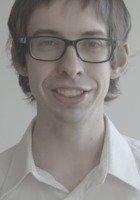Statement of Teaching Philosophy Teaching is one of the noblest tasks. In the case of language instruction, teaching extends beyond sharing knowledge to sharing culture and identity. As a result, the teaching and learning of a new language necessarily should be comprised of a student-centered pedagogy in which learning is a collaboration between student and teacher, as well as between students. This sort of collaboration invests the student in his or her own learning, exposes a student to varying cultures and identities, and, consequently, gives the students more confidence to engage in a new language while building a sense of community. Learning a new language is a communicative process; to be effective it requires meaningful group- based and open activities. Because students come from a wide variety of ethnic, linguistic, socioeconomic and educational backgrounds, teachers bear the responsibility of advocating for the educational needs of all them. It is my responsibility as an educator to get to know my students and leverage their unique learning capabilities and experiences. To that end, I create activities in which students must draw from personal experiences to answer questions. This allows them to engage with the language on a personal level as well as helps me, as their teacher, better to understand and contextualize their backgrounds and learning styles. Specifically, I like to create group activities that mimic real life situations in which students, working in small groups, must complete a task in the target language. These activities are aimed at overcoming differences and building a sense of community within the classroom. They give students the tools necessary to respond to scenarios that they will encounter in the real world and the confidence to utilize the language outside of the classroom. During these activities, my role becomes that of facilitator, enabling the students to be the "main characters" in their learning process. Different situations offer a variety of ways that students can utilize language to complete tasks. In this way, group activities allow the students to develop their strategic competence, as often situations arise in group activities where the student may not know how to say something but is capable of strategically employing the language he knows to reach a solution. Strategic competence is vital when using language in real world settings. Similarly, because language and culture are intimately tied, it is important to incorporate cultural activities. These activities have infinite possibilities; they can range from inviting Spanish speaking guest speakers to introducing students to cultural artifacts (i.e., film, art, dance, literature, geography, political science). Knowledge of cultural components allows students to better contextualize language as it relates to linguistic interactions with people of Latin American and Spanish descent. In my experience, the cultural activities in my classes significantly influenced my decision to study abroad and invest myself in the Latin American culture. It is my goal as a teacher to spark that same excitement in my students and push them to expand their horizons. As a teacher, it is also very important to build rapport and a sense of trust with my students. This is critical to getting to know my students and their unique situations and learning differences. Teachers must be honest and sincere with their students in the process of getting to know them. This sense of trust gives students the confidence to participate more in class and take control of their learning. Furthermore, when it comes to evaluating student progress, understanding a student's strengths and weaknesses makes it easier for a teacher to make the necessary adjustments to ensure that everyone has an equal opportunity to be successful. Measuring a student's progress is an imprecise science. I find it effective to utilize a simple participation sheet that evaluates each student daily in three major categories--attendance, in class participation, and homework. Each week the students get this feedback so that they are aware of where they can improve and where they are doing well. By receiving weekly feedback students are better able to prepare for the more high stakes measurements of progress, such as essays and tests. I also believe that as a teacher, I must also seek feedback from my students in order to better facilitate the class and improve my own teaching in the future. Learning a second language opens students to whole new worlds of opportunity--not only in their professional development but also in their personal development. Language introduces art, history, music, dance and many other aspects of culture that allow students to better understand the value of diversity while deepening their ability to interact in diverse communities, both in professional and personal settings. It is my goal as a teacher to impart on my students this passion for language and culture as a tool that serves not only a pragmatic purpose--learning a new language--but also as an impetus for students to continue to learn outside of their linguistic boundaries. In essence, living a much richer personal and intellectual life.




